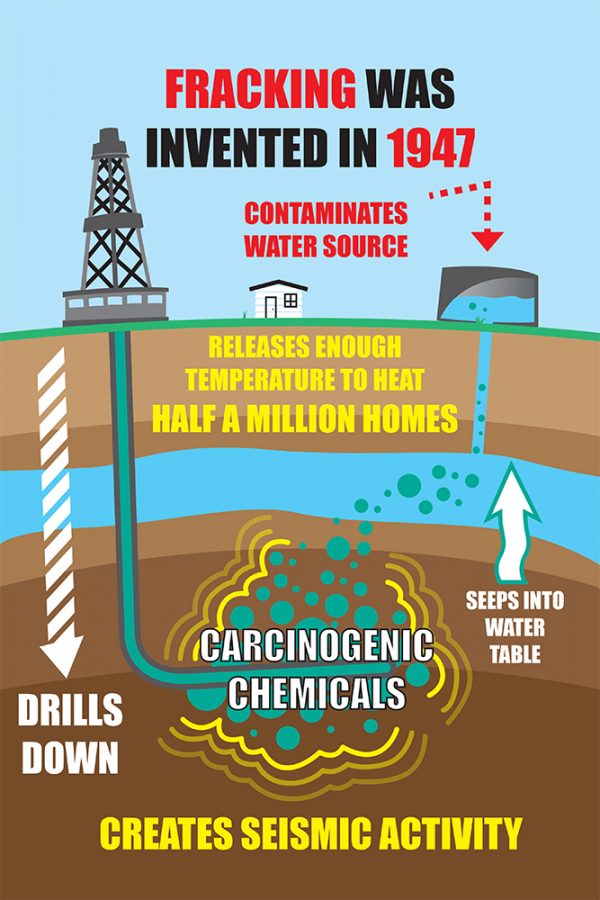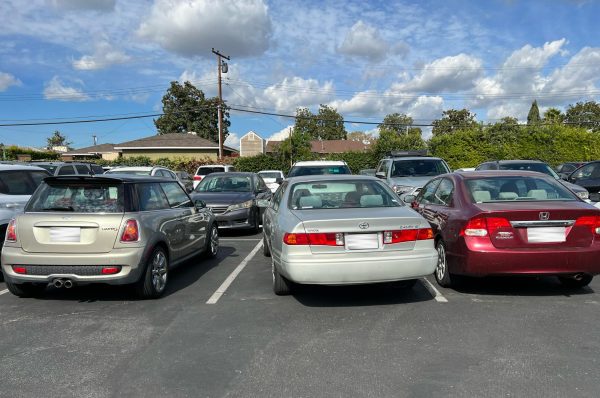Fracking fails the future
While hydraulic fracturing fosters economic growth, it irreversibly damages the environment and human health.
November 17, 2015
Once industrial jargon, fracking has now entered the mainstream language due to its economic importance and its environmental impact. The practice sparks economic boom in the short term, but in the long term, America must begin finding alternatives to this environmentally damaging process.
Extraction Method
Despite its inception in 1947, it would take no less than 50 years before hydraulic fracturing, or fracking, matured into what is now: an immensely popular method for extracting natural gas from subterranean reservoirs.
According to a BBC article, fracking is “the process of drilling down into the earth before a high-pressure water mixture is directed at the rock to release the gas inside. Water, sand and chemicals are injected into the rock at high pressure which allows the gas to flow out to the head of the well. The process is carried out vertically or, more commonly, by drilling horizontally to the rock layer. It can create new pathways to release gas or can be used to extend existing channels.”
This process has revolutionized the energy industry, and has cultivated “shale booms” in states such as California, Montana and Texas.
Strike Rich Fast
In 2014, VICE released a video documenting the life of Colin Bennett, a young driller who claims he made over a quarter million dollars from the North Dakota fracking boom. In between his frequent visits to Las Vegas, Bennett works as a directional driller for an oil company in Tioga, N.D. Bennett was deployed to Iraq in 2003 and was hired afterwards, becoming one of the many men who have been provided lucrative jobs by energy companies looking to strike rich fast.
Fracking, like any method used to extract oil and natural gas, also has negative effects on local communities and the environment. Energy companies have been criticized for their use of harmful chemicals and toxins used in the fracking process. These chemicals are known to contaminate the water table and release carcinogenic chemicals into local water systems, causing irreversible environmental damage.
Causing Cancer
Kandi Mossett of the Indigenous Environmental Network states in a Truthdig Article, “A lot of people around me have cancer. I’m a cancer survivor. It has become something that is normal for us. It comes in all forms—bone cancer, lung cancer, uterine cancer and prostate cancer, amongst others. Even before the fracking began we had seven coal-fired power plants in North Dakota. Every inch of our over 11,000 miles of rivers, lakes and streams are already contaminated with mercury.”
Mossett explains how fracking has released enough gas into the atmosphere to “heat half a million homes every day” and has caused seismic activities in North Dakota, along with Ohio and California.
Citizens’ Decision
While fracking is an important driver of economic prosperity in many Midwestern communities, citizens should ultimately be allowed to decide whether or not energy companies frack in surrounding areas. The U.S. needs to develop cleaner forms of energy in order to wean off national dependence on hydrocarbons and allow communities to flourish economically without ruining their natural surroundings.







